The Economic History of Central African Republic
Today we will learn about The Worst Dictator you have never heard of, A Current Civil War you have never heard of, and a nation that briefly adopted Bitcoin as legal tender
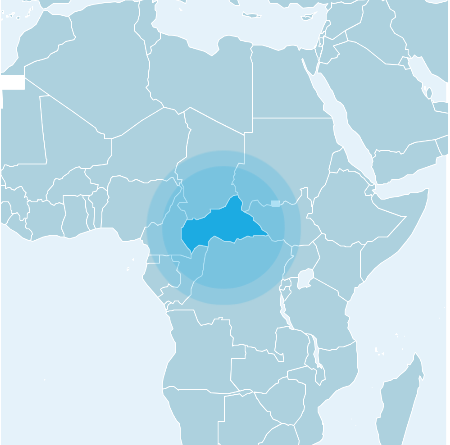
“It was a dictatorship but there was also order and stability. There is no civic responsibility any more. There is no patriotism either. This is what has brought all these wars and hatred.” — Michel Yambete, a governor in Houam Pendi, Central African Republic telling a BBC interviewer.
The quoted person defends Bokassa’s rule during the era of extreme corruption, arbitrary murder, and detainment (1966-1979) in the Central African Republic. The person argues that despite the atrocities, it was a time before the nation was embroiled in a decade-long civil war that persists today, displacing over 1M people and killing 13K.
Central African Republic (CAR), a small landlocked country in Central Africa gained independence in 1960. Since then, it has witnessed six coups and has been engulfed in a largely ignored civil war since 2012. CAR is so underdeveloped that lacks a credit rating, while over half of African nations have one. It’s banking sector is embryonic, dominated by microfinance firms and commercial banks in the capital, Bangui. CAR is an aid-dependent country where the net official development assistance, amounts to 224% of its central government expenditure budget.
There are ~5.5M people who live there with many ethnic tribes like Gbaya, Ngbaka, Baggara Arabs, Baka, Banda, and etc. 73% of the nation is Christian, 14% is Muslim, and the rest are traditional faiths. Previous presidents have oppressed the Muslims, fueling animosity today. 71% of CAR lives under $1.90 a day and is the 4th worst nation for human development, according to the United Nations development report in 2021. The life expectancy there is 54 years, literacy rate is 37%, and the average Central African makes ~$500 a year. Even Haiti, the poorest nation in the western hemisphere, blows CAR out of the water. Haiti’s life expectancy is 63 years, literacy rate is 61%(which is still appalling), and average person makes $1480 a .year, which is also skewed towards the top.
Informal economy
CAR operates largely as an informal economy, with many transactions going unrecorded by the government (i.e. home made alcoholic beverages, traditional African medicine, etc.). Due to the civil war, rebels engage in illegal gold & diamond trading with commodity traders, further undermining economic stability. Household and communal production, such as farming, water collection, and housing construction, contribute significantly to the informal economy, bypassing GDP calculations. The meager income that people do make goes into buying tools, materials, foods, and fuel.
CAR is one of the few African countries where the average Central African had a higher standard of living in the 1960s than in the present day.

CAR is in a civil war, and it’s per capita incomes are poor even by African standards. It has underwent 11 IMF lending agreements due to failure to deal with balance of payments crises. The economy is overwhelmingly composed of subsistence farming, where three fourths of the people are cassava, corn, plantain, cotton, and tobacco farmers. Only 11% of access to the internet (half a million people), 14% have access to electricity, and less than half have a mobile phone. Yet, as of 2022, Bitcoin was one of the legal tenders of the country besides the Central African CFA Franc.
Central African Republic has uranium, crude oil, gold, diamonds, and cobalt. But these resources are largely untapped or illegally smuggled due to CAR’s dysfunctional state capacity. As a result, Central African Republic legally exports $231M a year, which is a paltry amount entering the central bank. Even poor countries like Benin and Niger exports ~$2B and ~$3B worth of goods per year respectively.
Even with all of CAR’s reserves, it doesn’t make the top 10 list in uranium deposits, gold , crude oil, diamonds or cobalt deposits. In other words, even though CAR has largely untapped reserves of important resources, it neither possess legions of reserves relative to other resource endowed nations nor does it currently sell a lot of resources compared to huge commodity nations like DR Congo, Saudi Arabia, Russia, Australia, and South Africa since so much is smuggled illegally.
In terms of exports it depends on selling wood, gold, and diamonds. But it sells a paltry amount, only $231M a year. To put in perspective, Haiti, another extremely chaotic and poor country, exports $1.28B goods a year. Haiti exports more knitted T-shirts in one year than all of Central African Republic’s, non-smuggled exports in a year combined.
Most of CAR’s exports go to the EU, America, China, and Pakistan.
Pre-Colonial Era
The earliest inhabitants of this area were the dwarf, Pygmy peoples. But by 1400s, various Bantu Africans started making settlements in this area that were more or less “stateless societies”.
The place we call Central African Republic has been a slave hub of other African empires, Arabs, and Egyptian-Sudanese Arabs, for centuries from 1500s-mid 1800s for the Trans-Saharan trade.
Slavery depopulated the society and made economic activity in the area nonviable. By the late 19th century, Muslim states like Dar al-Kuti, Zande, and Bandi emerged.
In the late 1800s after the Berlin Conference, France secured regions in Africa to create French West & Equatorial Africa.
French Colonial Ubangi-Shari (1903-1960)
From 1903, the French kicked out the Arab slave raiders, and named it Ubangi-Shari after the names of the Ubangi and Shari rivers. Ubangi-Shari becomes part of French Equatorial Africa. Men and women were forced to gather rubber, ivory, cotton, and animal skins. Large plots of land were given to private companies for plantations. In colonial forced labor, the French “paid” Africans in cheap beads and poor-quality cloth.
The novelist and essayist Andre Gide, traveled across Ubangi-Chari from 1926 and 1927 where he revealed the evils of French colonialism. Gide thought he would find civilizing missionaries and a beautiful jungle. Instead he found French colonial agents tying men to trees and shooting them, maiming women with machetes, children being burned alive in huts, and men carrying huge beans while walking in a circle for hours in heat until heat exhaustion. While were agents doing this? Because the people failed to meet their rubber exporting quotas.
The Africans tried rebelling, such as the Kongo-Wara Rebellion (1928-1931), but the French crushed it, executed their leaders, and forcefully relocated people’s to other villages/colonies.
In addition, French missionaries spread Christianity to the animist Southern majority, while the Muslim North minority was uninterested in Christianity. The Southern Christians who were mainly Ngbaka and Yakoma became the local elites that France propped up to be “evolues” or “Evolved Africans”.
After WW2, due to the loyalty French Africa showed Charles De Gaulle, by 1946, France included Ubangi-Shari and other parts of French Africa into the “French Communities”.
As a part of the French community, France gave way more investments into its colonies (healthcare, education, infrastructure). A Black Catholic Priest, Barthelemy Boganda, a member of the French propped up Southern Ngbaka elite, became the first representative for Ubangi-Shari.
Barthelemy Boganda (1946-1959)
As the representative, Barthelemy ended forced labor(which was basically slavery).
In 1958, the colony held a constitutional referendum on whether to under French rule or be independent. 99% voted to stay in France’s influence, including the colonial currency, the Central African CFA franc. Why did they choose to stay? Ubangi-Shari was one of the most unprofitable, non viable states. Staying in French rule meant retaining French aid. The Only French African state that left the French orbit was Guinea.
The Central African CFA franc currency is kept at the Bank of Central African States (BEAC) which was pegged to the French Franc, but is now anchored to the euro. Over 50% of foreign assets of Central African republic stays within the French Treasury. The headquarters of BEAC is now in Yaoundé, Cameroon.
Boganda focused on unifying the diverse ethnic groups in the country. He also tried to combine Ubangi-Shari with the rest of French Equatorial Africa (Cameroon, Gabon, Chad, Niger, & Congo-Brazzaville) to become the Central African Republic, but the initiative failed, due to all the states’ lack of interest. So only Ubangi-Shari became the Central African Republic. Unfortunately, Barthelemy Boganda died in a plane crash. Many Central Africans say the French sabotaged the plane. By 1960, the nation received independence.
Independent Central African Republic
David Dacko (1960-1965)
David Dacko, nephew of Boganda and another Southern Ngbaka became president. Many things went wrong.
French-Afrique: David allowed French businesses, trade, aid, and defense in the country.
State-building: Dacko focused development almost exclusively on the capital Bangui, the rest of the country, “the hinterland”, was neglected/left to chiefs. Due to the fact that there was never a unified Central African state before colonialism, and France barely invested in the colony, many tribes didn’t realize they were in a country called Central African Republic. Some people thought they were Sudanese Darfurians or Abeche people who were now mainly in Chad.
Government Policy: By 1962, he turns the country into a one party state. Unfortunately, Boganda favored his tribe and focused more on paying government workers nice salaries and pensions than elevating Central Africans from subsistence farming. The country was terrible at agriculture and had to import more than it exported to meet the needs of the nation.
Timber Industry: Most companies (which focused on timber) were run by foreigners - French, Chinese, and Lebanese since the populace was mostly illiterate.
Mining Industry: Dacko failed to properly collect enough royalties from the French mining companies selling diamonds and gold.
Unfortunately, CAR faced bankruptcy by 1965 and the nation had a nation wide strike. .
Jean Bedel-Bokassa era (1966-1979)
Dacko was ousted by the French backed, army commander, Jean Bedel Bokassa, as the country faced bankruptcy and a nation wide strike. Bokassa was another Southern Ngbaka tribesman. Bokassa called himself a “Socialist Emperor”. France did not like that Dacko was strengthening relationships with Qaddafi’s Libya and the Soviet Union, so France supported Bokassa’s coup.
Bokassa was morally bankrupt, multiple wives with 50+ kids, corrupt, and ignorant.
Bokassa suppressed all political liberties, he renamed the country “Central African Empire” where he crowned himself emperor in a ceremony which costed 33% of the entire economic output of the country. He stopped national projects. By 1972, Bokassa made himself “president for life”. During his coronation in 1977, he had thoroughbred horses, a 6 foot diamond-encrusted scepter and a throne shaped like a golden eagle. Many Central Africans wanted to kill Bokassa, but France’s military defended him several times.
Because of Bokassa’s insanity, France fancied the thought of removing him. Bokassa was aware of this so he became close to Qaddafi who was an enemy of the West. This meant France needed a new pawn.
Economically, despite his massive corruption — Bokassa gave the French President Giscard, diamonds, ivory, ebony, and gold worth $250K ($1.1M in today’s money) — was able to improve economic conditions in the country (meagerly) mainly because there was a gold & diamond price boom. Because of this, some Central Africans look back at the Bokassa era with rose-tinted glasses calling this era “The Gold Ol’ Days”.
I should say that Central African Republic’s income during the Bokassa era was still poorer than other Central African Countries like Cameroon or Gabon.
Things took a turn for the worse when Bokassa ordered troops to kill children rebelling Bokassa’s decree that kids must buy uniforms by one of his wives’ companies. Bokassa personally killed some of the kids. This ultimately tainted France on the international stage for supporting Bokassa.
Bokassa is eventually given imprisonment for life for murder, supposed cannibalism and embezzlement.
Dacko returns (1979-1981)
Dacko returns as president and he is seen as a French puppet. Many former Bokassa supporters distrusted him. Dacko started CAR’s borrowing from the IMF. The ~$12M loan he borrowed involved currency devaluation & removal of fuel subsidies, which disproportionally hurt the poor which was the majority of the population.
Andre Dieudonne Kolingba (1981-1993)
Andrew Kolingba, with the help of French security officers who acted without the French government’s direct approval, overthrew Dacko in a coup and becomes prime minister. Andre was the first non-Ngbaka ethnic to rule CAR, ending Ngbaka dominance. Kolingba bans all political parties and favorited his ethnic group the Yakoma for government jobs and investments, which was 5% of the population. 70% of army forces were in his ethnic group.
French-Afrique: Andre requested help from the DGSE (French CIA) to help him run the country and gain investments in telecommunication, oil, timber, and transportation.
Mass atrocities: Andre’s chief of staff, Ange-Felix Patesse, tried to overthrow him. Patesse failed. As a result, Kolingba ordered an expedition to kill people in Patesse’s tribe - the Kaba-Sara.
Macro-Issues: There was a global commodity bust and gold and diamond prices fell, hurting the economy. Kolingba needed more IMF loans, which meant more austerity. By the 90s, the IMF added an additional condition to make Kolingba reinstate multi-party democracy.
In CAR’s first democratic election he lost to Ange-Flexi Patasse.
Ange-Felix Patasse (1993-2003)
Patasse was the first Northerner President. He was a Sara-ethnic, which is also a Southerner group in Chad. He leaned very hard into the North-South divide and patronized Saras and Northerners with contracts and jobs.
This was one of the worst times, for Central African Republic. Commodity prices for gold continued to plummet as resource rich, ex-Soviet nations entered the global commodity market, plummeting prices. CAR’s economy was in shambles, and Southerners were rioting and militias tried to kill him. France and Kaddafi of Libya defended him from assassination multiple times. In addition, Burkina Faso, Gabon, Mali, Senegal, Chad and Togo also sent in troops to defend Patasse from rebels.
In 2002, Kadafi stationed his troops in CAR to defend Patasse, and French President Jacques Chirac thought Kadafi wanted to annex CAR, just like he attempted to annex Chad in the 70s. Chirac of France, Chad, Gabon, Congo-Brazzaville, and Democratic Republic of Congo told Kadafi to leave, and Kadafi obliged.
Eventually, a military general named Francois Bozize overthrew Patasse with a militia mainly from Chad.
Francois Bozize (2003-2013)
The African Union condemned the coup started by Bozize and put economic sanctions on the country. Bozize had to hold elections to end the sanctions. However, in 2005, he rigged the election to stay in power. Bozize was born in Gabon and was not a member of the dominant Yakoma or Ngbaka tribes.
Central African Republic Bush War (2004-2007)
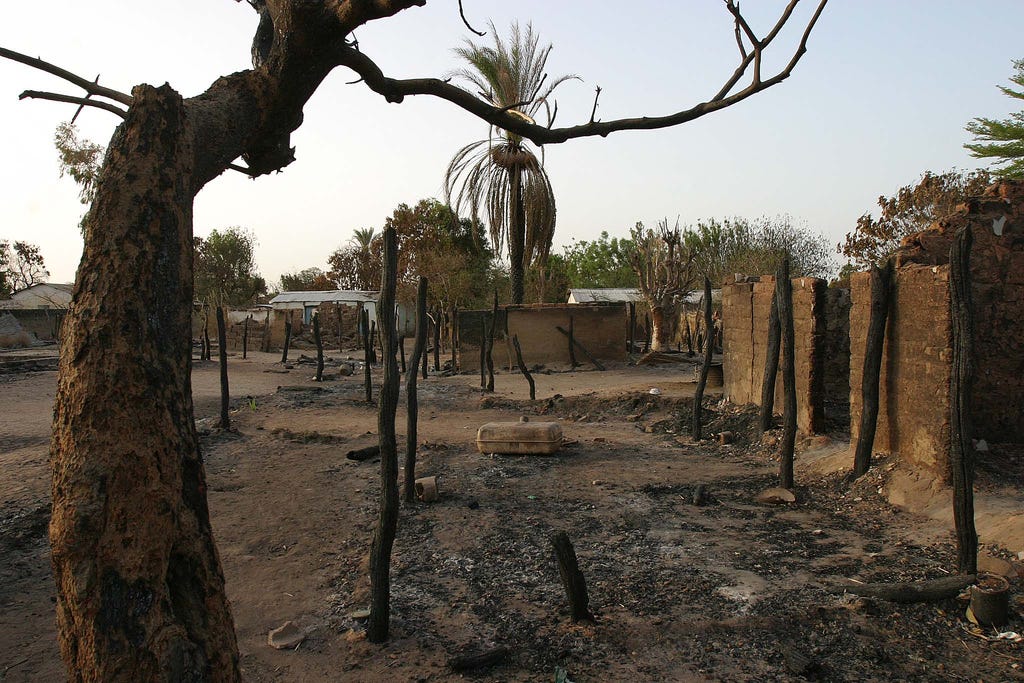
By 2004, Bozzie fought a war against insurgent groups in 2004 — The Union of Democratic Forces for Unity (UFDR), led by Michel Djotodia (more on him later). Rebels started this war due to political exclusion, economic marginalization, Muslim oppression, and some wanted Patasse back in power. The war ended by 2007.
Bozize, despite winning elections in 2005 and 2011, had to spend his political will dealing with banditry and spillover conflicts in neighboring Chad, Sudan, Democratic Republic of Congo, and Uganda’s Lord Resistance Army. There has been some economic growth during his period mainly due to the international commodity price boom for gold.
Central African Civil War (2012 — Present)
Moammar Kadafi used to provide security and loans to CAR as an alternative to France, but after NATO armed the rebels in the Libyan Civil War to kill Qaddafi, Central Africa has descended into chaos. Bozize begged for French intervention, and France complied (Operation Sangaris).
By 2013, a group of mainly Muslims joined together forming Seleka (“the alliance” in local language Sango), still led by Michel Djotodia removed Bozzie and started pillaging the south of the country.
Michel Djotodia (2013-2014)
Michel’s rebel group, Seleka, overthrew Bozize, and Michel became the first Muslim leader of CAR. However, Seleka balkanized due to disputes over who should get the spoils of victory. Michel’s group controlled the capital Bangui, while other factions of Seleka started to murder and attack Christian groups, which is the majority of the population. So the Christian majority made a rebel group called “Anti-Balaka” (Meaning “Anti-Machete” in Sango).
The conflict transformed into a Christian vs. Muslim war. There has been grave atrocities with rape, mass murder, displacement, mosque-burning, and etc. Militias sold diamonds to fund their war, another “Blood Diamonds” episode, like Sierra Leone. The UN Security Council launched weapon sanctions to stop rebels from accessing arms. Djobtodia resigned due to international pressure.
Catherine Samba-Panza (2014-2016)

Catherine served as a two year transitional president after Djotodia resigned. She was CAR’s first female president and tried to restore democracy and stability. She requested the UN and African Union to send a peacekeeping force.
Unfortunately by 2015, some ex-Seleka, Muslims seceded from Central African Republic and recreated the pre-colonial Muslim Sultanate before French imperialism called “Dar al-Kuti” or “Home of the Forest”
The Muslim minority sought creating their previous state after facing decades of discrimination by successive Christian governments. No one in the international community acknowledged this nation and it was destroyed by 2021. How did CAR destroy it? Russia stepped up to help.
Faustin-Archange Touadera (2016-Present)
In 2016 Touadera was elected. During the civil war, France has completely left their troops from the country, and the UN was not doing enough. So CAR needed a new backer, and Russia stepped in to support.
Under Touadera’s administration he is trying to change CAR for the better. But many of his efforts are incredibly desperate.
Economic wise he adopted Bitcoin as legal tender, but this was repealed in 2023. Then he made a crypto coin called “Sango coin” which barely any Central African bought. He also offered citizenship for $60K to bring business to the nation. Barely anyone took it.
Security wise, Touadera hired Russian mercenaries from the Wagner group and Kagame’s Rwandan military to crush the rebels. The Wagner group has already defended Touadera from coups. The Russians have helped CAR retake most of the country.
He is strengthening economic ties with Vladimir Putin. Right now the CAR government barters diamonds & gold to Russia’s mercenary group in exchange for protection. Russia also protects CAR’s diamond & gold mines from illegal traffickers. CAR has already given the Russia firm, Lobaye Invest, a firm formerly run by Putin’s dead chef deceased Russian Oligarch Yevgeny Prigozhin, a license to mine gold and diamonds. Because of Russian support, CAR did not condemn Russia when it invaded Ukraine.
Russian protection has provided Touadera the cover to build up the productive capacity of CAR. Under him, gross capital formation as a percentage of GDP - roads, mining equipment, infrastructure, fences, drains, and etc. has grown to its highest levels ever, almost a quarter of its GDP. Due to this, Central Africans in the capital Bangui seem to love Russia.
Hopefully Central African Republic can one day end its civil war.
All Links are in the description!


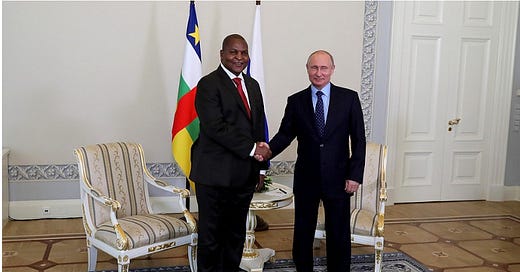



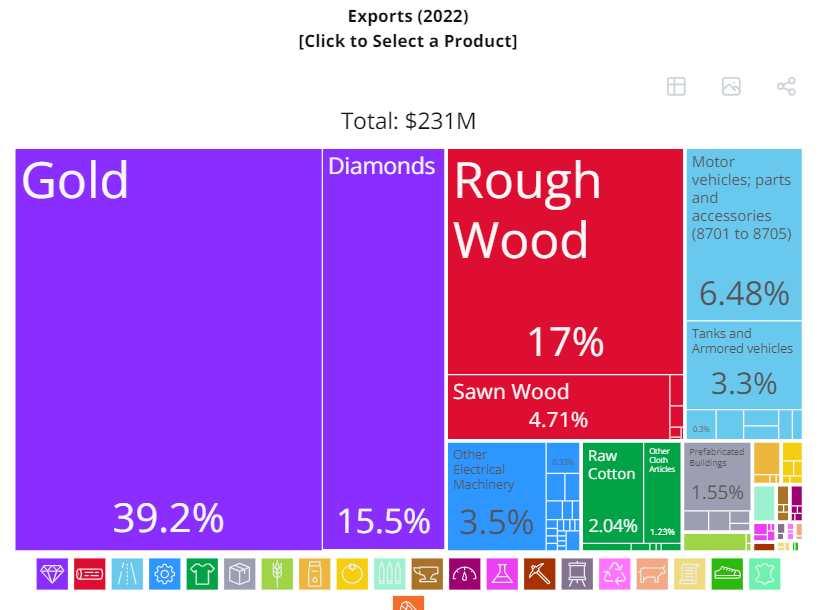
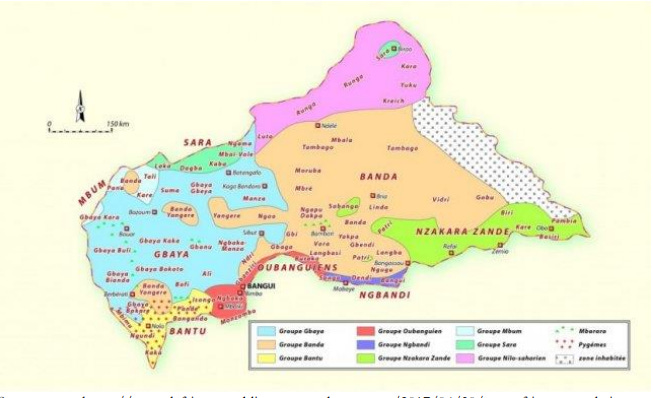
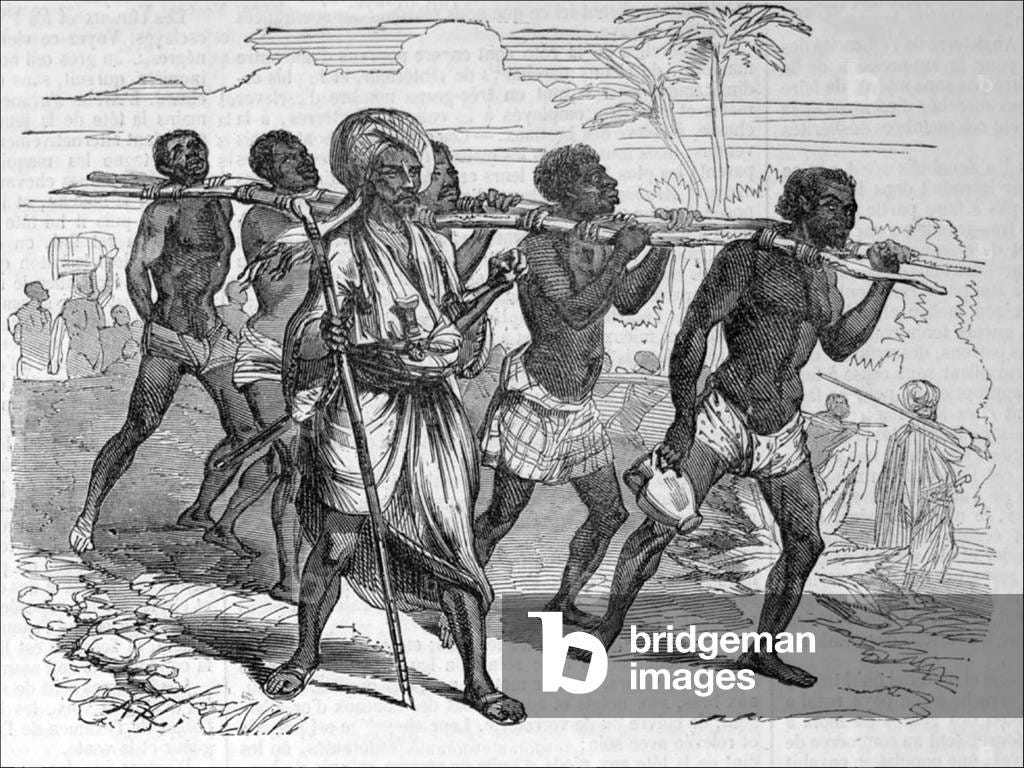

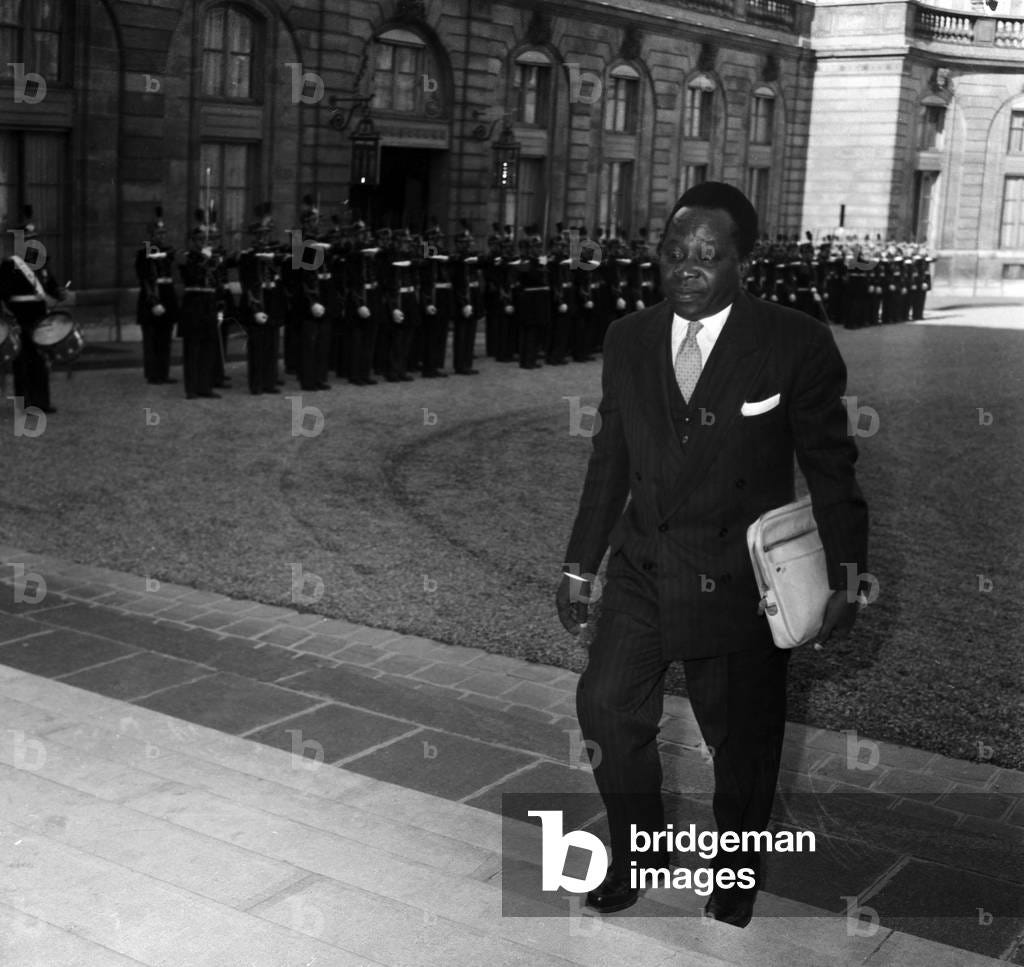

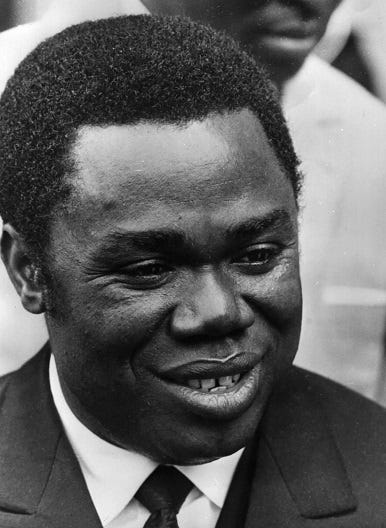
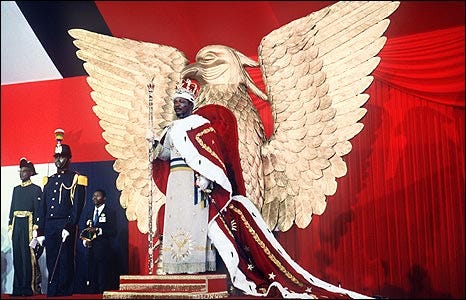





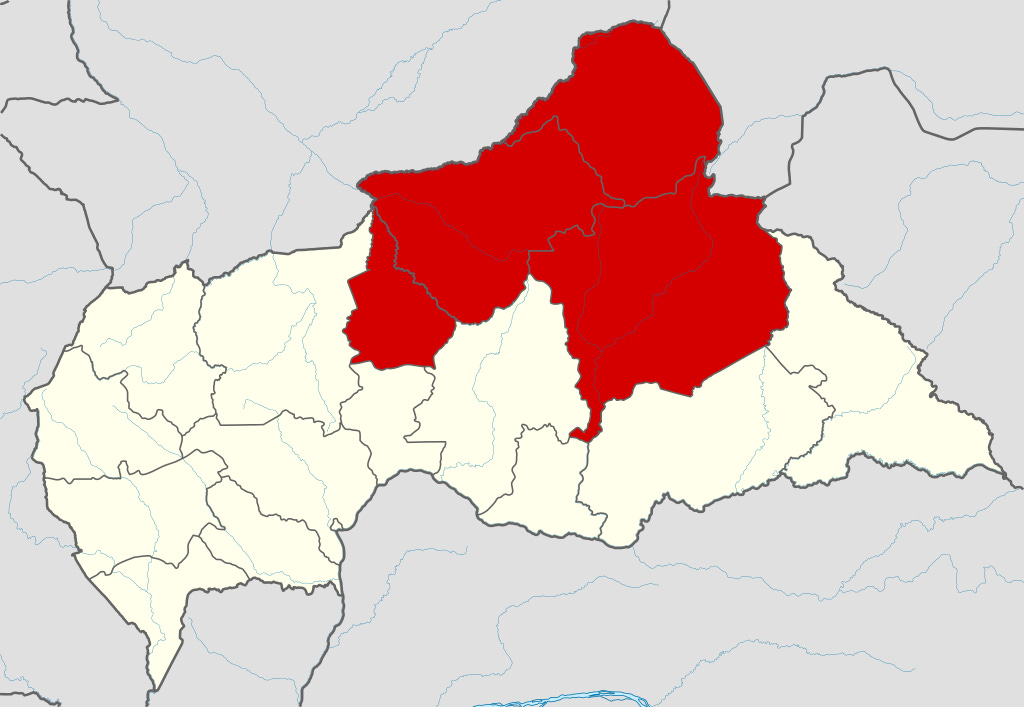

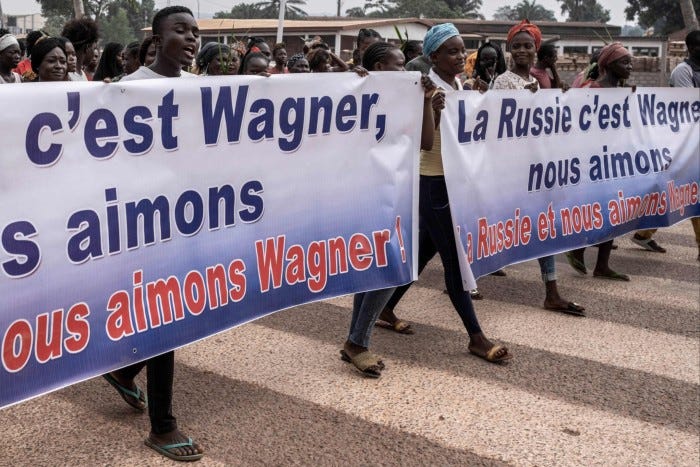
Sounds horrible
https://www.africanparks.org/the-parks/chinko
Strange the areas of CAR that are developing.